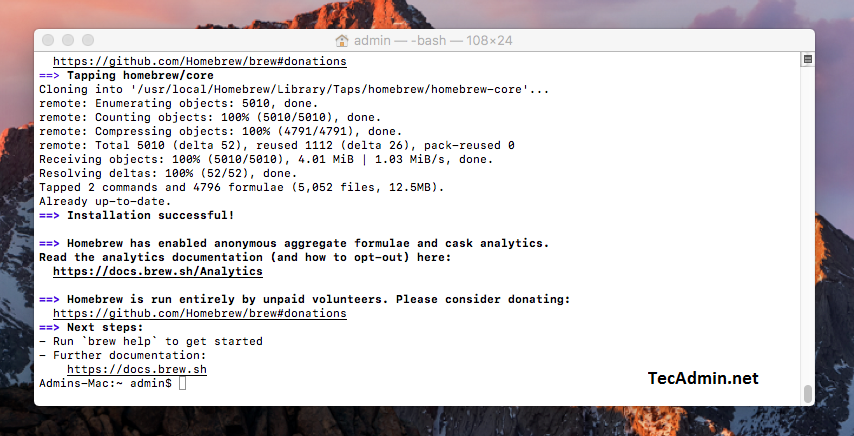Package managers make it so much easier to install and update applications (for Operating Systems) or libraries (for programming languages). The most popular one for OS X is Homebrew.
Brew tap -repair. The command below upgrades Octave and its dependencies to the latest Homebrew-supported versions: brew update && brew upgrade octave. Octave has a built-in GUI (developed using Qt lib) installed by default so that gnuplot and other tools can use it directly. This GUI is always installed when installing Octave using Homebrew. Get ClamAV running on Mac OS X (using Homebrew) The easiest way to get the ClamAV package is using Homebrew $ brew install clamav Before trying to start the clamd daemon, you'll need a copy of the ClamAV databases. Homebrew complements macOS (or your Linux system). Install your RubyGems with gem and their dependencies with brew. “To install, drag this icon” no more. Homebrew Cask installs macOS apps, fonts and plugins and other non-open source software. To run the latest Ruby version you need to install it through Homebrew. # Install Homebrew /bin/bash -c ' $(curl -fsSL https. Homebrew is a free/open source software package management system that simplifies the installation of software on the Mac OS X operating system.
Macos Brew Install Docker

Install

An important dependency before Homebrew can work is the Command Line Tools for Xcode. These include compilers that will allow you to build things from source.
We can install Hombrew! In the terminal paste the following line (without the $), hit Enter, and follow the steps on the screen:
One thing we need to do is tell the system to use programs installed by Hombrew (in /usr/local/bin) rather than the OS default if it exists. We do this by adding /usr/local/bin to your $PATH environment variable:

Mac Brew Update
Alternatively, we can also insert /usr/local/bin to the first line of /private/etc/paths and reboot the Mac to change global paths loading order. Admin password may be required if you modify the file.
Macos Brew Install Python 3.7
Open an new terminal tab with Cmd+T (you should also close the old one), then run the following command to make sure everything works:
